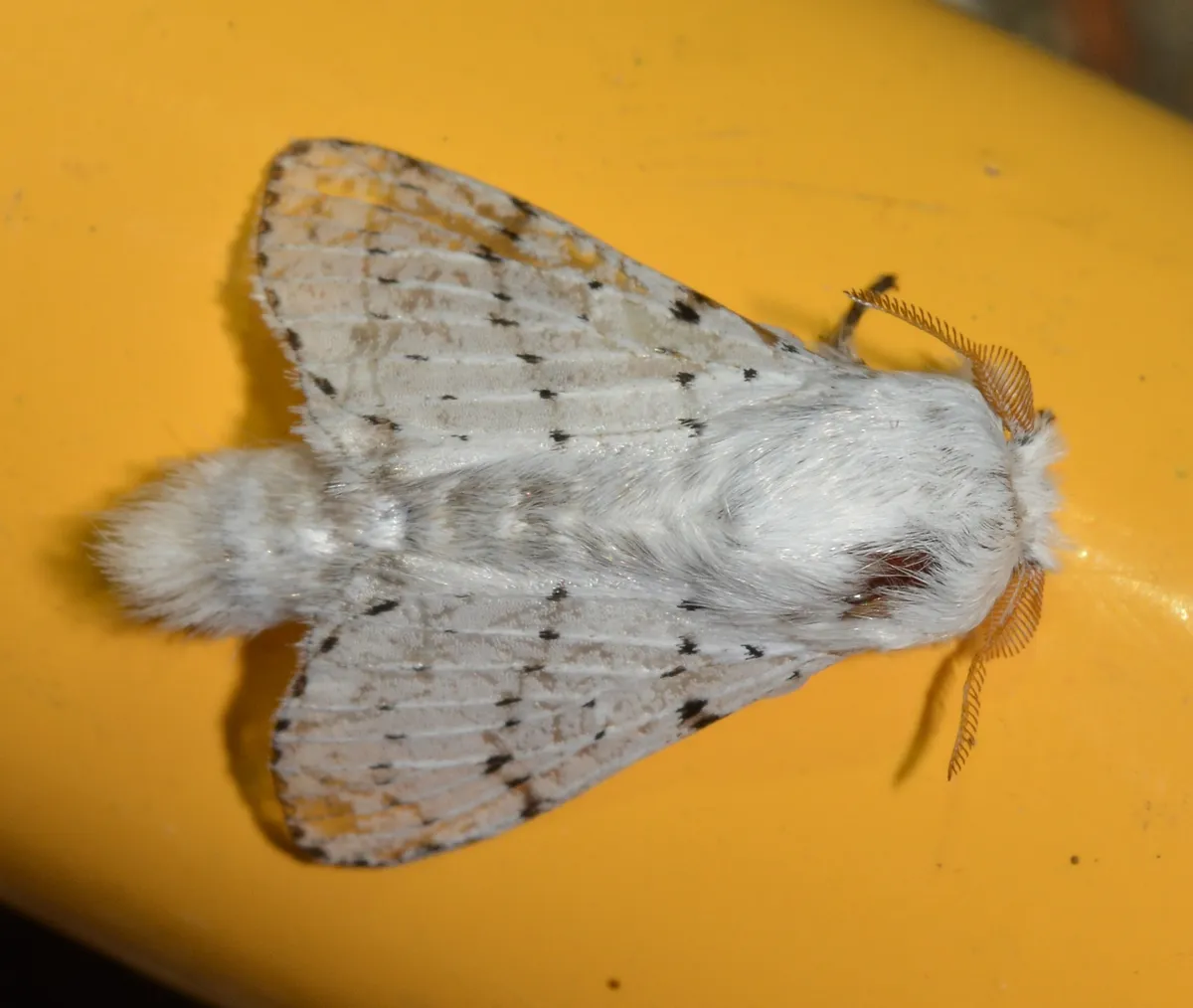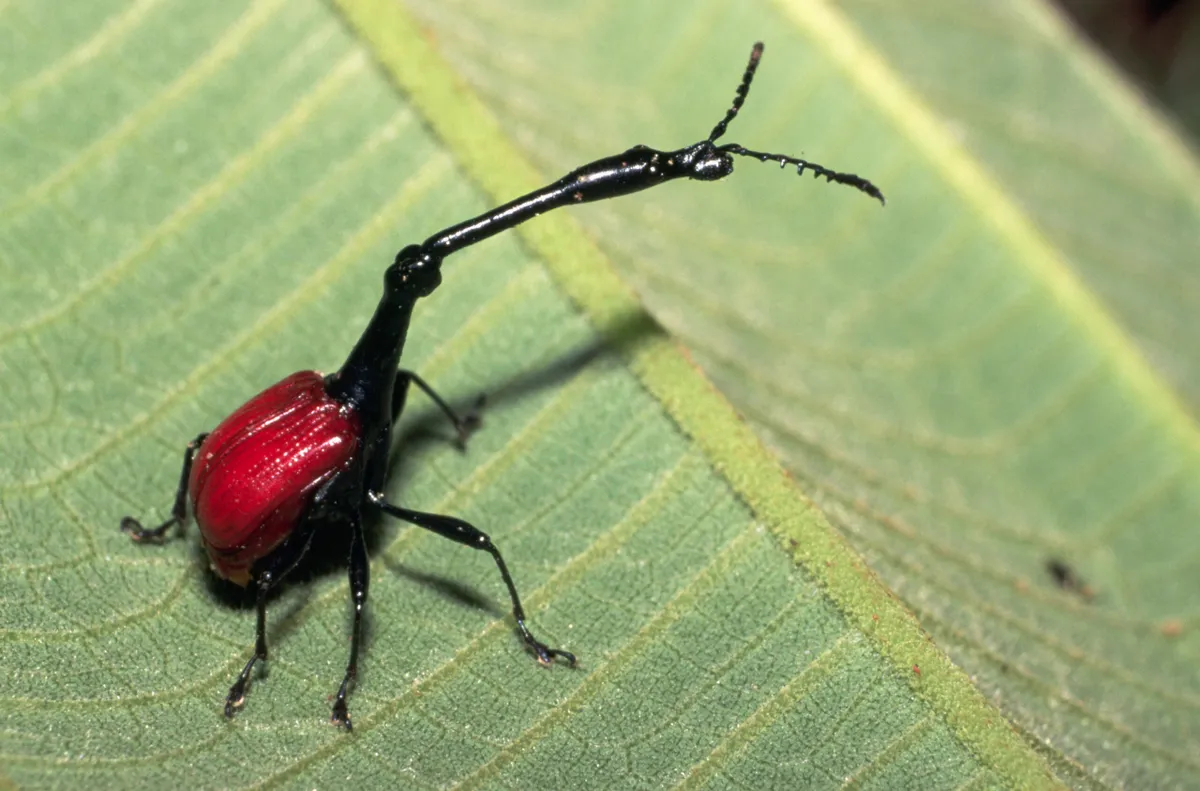In the vast world of insects, where millions of species buzz, crawl, and flutter, a select few stand out for their bizarre and bewildering traits.
Here are some of the strangest and bizarre insects, from ones that mimic twigs to those that have intriguing body parts, offering a glimpse into the stranger side of evolution's creativity.
Weirdest insects in the world
The treehopper
One of the weirdest animals in the world the treehopper is the cyborg of the insect world, with bizarre projections and protuberances sprouting from its thorax. The precise function of these extreme enhancements is rather mysterious.
They may play a part in physical protection or mate attraction. Or they could serve as resonators for the amplification of acoustic signals. In the case of the tropical American species Alchisme grossa, though, camouflage is at least part of the story.
And any predator that sees through the thorn-like disguise still has to contend with an arsenal of toxic chemicals harnessed from the sap that the bugs suck from wild potato plants.
Sandgroper

The sandgroper is a kind of grasshopper that's seriously good at surviving in Australia’s harsh and arid sand-lands. Some sandgropers are quite large, growing to 7-8cm long and are peculiar to look at because everything about them is honed to their hypogean ways beneath the sand’s surface
Wondering what they look like? Imagine a small chipolata sausage to which some joker has tastelessly attached the front end of a mole cricket
Stalk-eyed flies

Stalk-eyed flies are handsome creatures, though – a warm russet brown with white blotches on their wings and a pair of spiny protuberances on their thorax.
But I’m skirting around the edges here, because by far the most obvious thing about these flies is their eyes, and particularly those of the males.
Not just because they are a rather splendid bright red and accessorise well with the rest of their bodies, but because they are positioned, along with a pair of stubby antennae, right at the ends of extraordinary peduncles that stick out on either side of their heads.
Thorn bug

Yes these are insects. Designed to look like sharp thorns or a plant spike its bizarre shape helps it blend in with plants and avoid predators. About 10mm long these tiny insects are found in the Northern part of tropical regions of Northern South America to Mexico and Florida where temperatures are consistently above zero.
Venezuelan poodle moth

With a name like this we just had to add this insect to our list although little is known about it. Discovered in 2009 by zoologist Dr. Arthur Anke this white furry little moth (which reminded him of a poodle) remains secretive.
Praying Mantis

The praying mantis is weird for not only its prayer-like posture, but also for the fact it is the only animal with one ear. Located in the middle of its chest, this Cyclopean auditory sensor is used to detect the ultrasonic signals of bats, one of the insect’s key predators.
Its sensory sophistication doesn’t end there. It also has a unique form of stereoscopic vision, which is not found in any other invertebrate.
Researchers at Newcastle University temporarily attached tiny 3D spectacles to mantises, using beeswax as glue. These revealed how their complex eyes allow them to see in three dimensions– like humans, cats and owls – but only ifnthe object in their vision is moving, which is handy if you’re a hunter.
White beetle

The body scales of ghost chafers (genus Cyphochilus) are amongst the whitest known objects in nature (above).
They are not albino – that is, unpigmented – but each scale is filled with an array of random light-scattering nanotubules. These scatter the different rainbow colours in natural light equally and highly efficiently, with no single colour predominating.
Mimicking the fibre arrays could be used to create whitening agents for paper coatings, dentistry and pigment manufacture.
Giraffenecked weevil

Should you ever find yourself a spectator at the weevil races, it might be worth taking a punt on this beauty winning by a neck.
Males of the giraffenecked weevil, a Madagascan endemic, are better endowed than females, using their spectacularly disproportionate Gregory Pecks for leverage in fights with rivals.
The beetles feed and raise their young on one particular type of tree, with the sturdy females deftly rolling the leaves into protective – and edible – egg cases that resemble green cigars.
After laying a single egg inside, the female snips it from the tree so that it falls to the ground, where for some unknown reason, the going is good for larval development.
Lanternflies

Sap-sucking bugs aren’t generally the showiest of insects. But lanternflies – relatives of aphids and spittle bugs – are as big and beautiful as butterflies and we named them one of the prettiest insects in the world.
The 500-odd species are named after their outrageous headgear, erroneously thought to glow in the dark. The lantern is so grotesquely swollen in some species that the head resembles a mis-shapen potato. Its function is mysterious – possibilities include sexual signalling, camouflage, mimicry or sound amplification.
Lanternflies must drink a lot of sap to get enough protein. That means ingesting excess sugar, which they squirt from their rear ends in a continual stream of droplets. Certain moths specialise in intercepting these treats before they hit the ground.
It looks like it’s crawled straight out of the Cambrian era, but this is a trilobite only by name, one of many species of trilobite beetle that can be found in South-east Asian forests. The winged males are unremarkably coleopteran (beetle-like). The same couldn’t be said of the females, which develop neotenously – ie, missing out the pupal phase of development entirely to become sexually mature as larvae. That doesn’t stop them growing, though. They can reach 7cm long, dwarfing the centimetre-long males. It’s not known what they eat to fuel that growth. Nor is much else, for that matter – biologists are still working out which species of male belongs with which female. Stuart Blackman Science writer
Female scale insect

They may look like roadkill on a cycle path, but these colourful splodges are very much alive. Once a female scale insect has plumbed herself into her foodplant of choice and started sucking the sap that flows forth, she has no reason to go anywhere ever again.
A life of total immobility requires no functional wings, or even legs, but defences are essential, so these close relatives of aphids secrete a resinous shield for protection. The resin of some species is the source of shellac, once used to make gramophone records and still a component of wood varnish and nail polish.
Planthopper nymphs

Either someone has cheered the place up a bit with some fibre-optic mood-lighting or something is proudly displaying an array of multicoloured quills sprouting from its bottom.
Many planthopper nymphs extrude ornate waxy structures from their rear ends for the purposes of concealment, defence, shelter or mimicry. In some species, these look like fluffy clouds, in others they resemble fungi, vegetation or dreadlocks. They may also be wielded to enlist the services of ants, which browse on the nutritious wax while protecting their providers from danger.
Flag-footed bug

Ostentatious body parts are costly to maintain, so there needs to be at least one good reason to have them. In the case of the eye-catching appendages sported by flag-footed bugs, there are two.
Not only are these ‘flags’ paraded by males during courtship, but they also serve as decoys for both sexes, diverting an assailant’s attention from the body. Should a predator seize one, the bug can jettison the whole leg, much like a lizard sheds its tail.
But there’s little point in surviving if you can’t then attract a mate, which might explain why males are less willing than females to make the sacrifice.
Discover more fascinating insect facts




